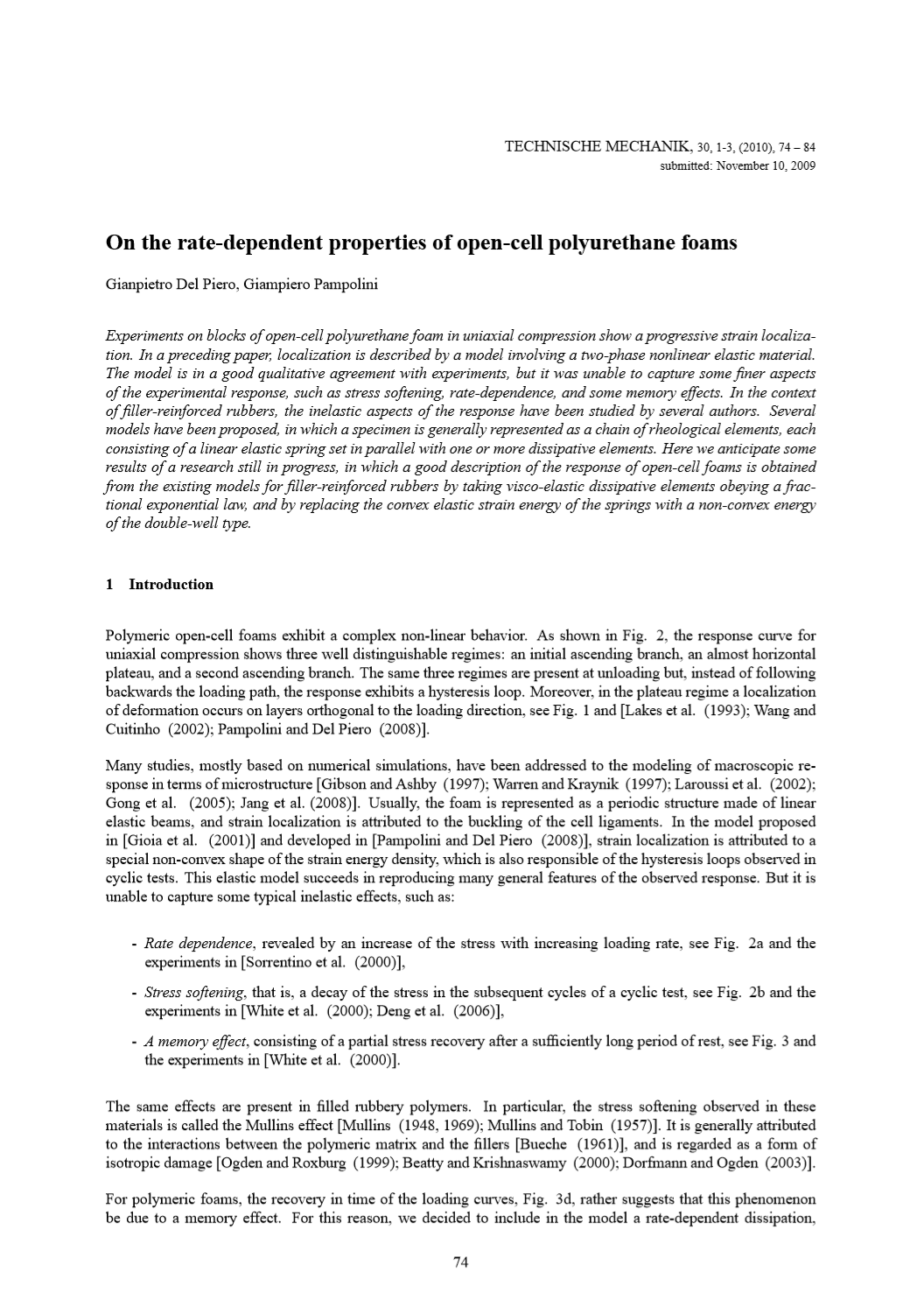On the rate-dependent properties of open-cell polyurethane foams
Abstract
Experiments on blocks of open-cell polyurethane foam in uniaxial compression show a progressive strain localization. In a preceding paper, localization is described by a model involving a two-phase nonlinear elastic material. The model is in a good qualitative agreement with experiments, but it was unable to capture some finer aspects of the experimental response, such as stress softening, rate-dependence, and some memory effects. In the context of filler-reinforced rubbers, the inelastic aspects of the response have been studied by several authors. Several models have been proposed, in which a specimen is generally represented as a chain of rheological elements, each consisting of a linear elastic spring set in parallel with one or more dissipative elements. Here we anticipate some results of a research still in progress, in which a good description of the response of open-cell foams is obtained from the existing models for filler-reinforced rubbers by taking visco-elastic dissipative elements obeying a fractional exponential law, and by replacing the convex elastic strain energy of the springs with a non-convex energy of the double-well type.





